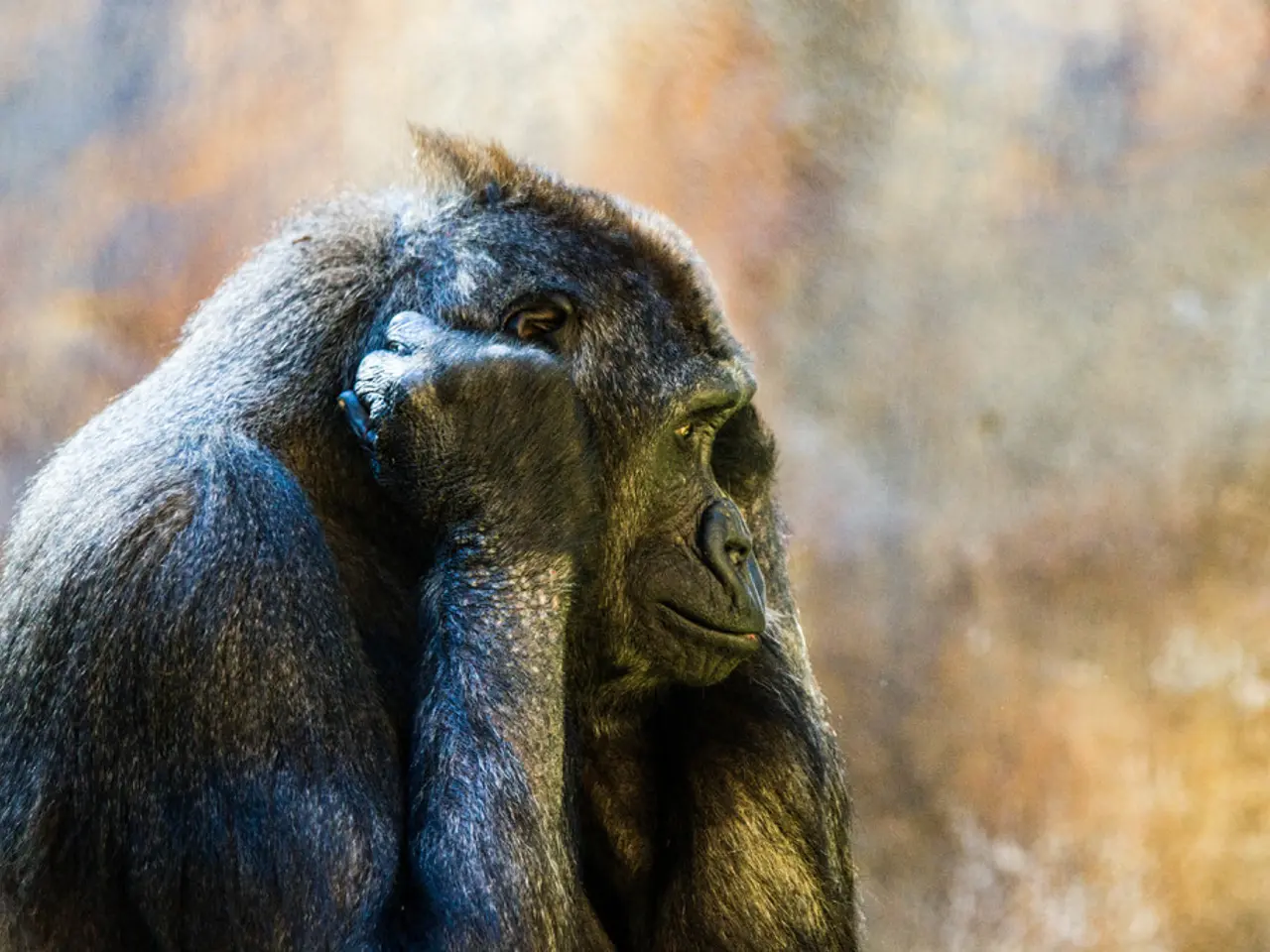Rare occurrence of 'alpha male' status among primates, as study reveals females have similar chances of dominant behavior towards the opposite sex.
In a groundbreaking study published in the journal PNAS, researchers have delved into the complex world of intersexual relationships across more than 100 primate species, painting a nuanced picture of dominance relationships between males and females. The study, led by Élise Huchard, a senior researcher who studies mammal behavior at the University of Montpellier in France, has challenged historical assumptions that males are usually more domineering.
The researchers found that in most primate species, neither sex is clearly dominant over the other. In some populations, males always won, while in others, females always prevailed. However, the outcome was more complex in the remaining populations, where there were moderate sex biases.
The study revealed that factors influencing dominance relationships are a combination of biological, ecological, social, and neuroanatomical elements. These factors vary widely across species.
Reproductive control and social structure play a significant role in female-biased dominance. This tendency is common in monogamous, sexually monomorphic (similar body size between males and females), and arboreal species. In such societies, females may leverage reproductive control as an alternative strategy to physical dominance.
Male-biased dominance is typical in polygynous, sexually dimorphic (males larger than females), terrestrial, and group-living species where physical strength often determines male dominance over females.
Intense female-female competition, especially in solitary or pair-living species, contributes to female-biased dominance patterns. Lower reproductive costs and female philopatry (females remaining in natal groups) also promote female dominance.
Pregnant and lactating females exhibit increased aggression due to greater energetic and nutritional needs, which can influence dominance patterns, such as in female gorillas where aggression towards higher-ranking females occurs more frequently in reproductive states.
Social dominance is linked to neurological structures. For instance, the strength of the right uncinate fasciculus, a brain tract associated with emotion and memory, correlates with dominance behaviors in primates like squirrel monkeys. This suggests an evolutionarily conserved neurological underpinning of dominance across species.
The neuropeptide oxytocin can modulate dominance hierarchies, sometimes flattening dominance asymmetries, indicating a biochemical component to social dominance regulation.
In the minority of species where there is clear-cut dominance, males and females typically employ different strategies to rule over others. For example, in Angolan talapoins, dominance varies not only across different groups but within a single group, exhibiting strict male dominance, strict female dominance, or no clear bias between the two.
The study challenges traditional views of male dominance being the default status in primates. Co-author Peter Kappeler, head of behavioral ecology and sociobiology at the German Primate Center research institute, said, "Recent research is challenging traditional views of male dominance being the default status."
Physical characteristics and living conditions play a role in determining dominance in primates. The study underscores the importance of considering these factors when studying social dynamics in primates and other mammals.
References:
[1] Huchard, E., et al. (2021). Sex differences in dominance relationships across primates. PNAS, 118(16), e2025131118.
[2] Wrangham, R. W., & Peterson, D. (1996). Demography and Female Reproductive Success in Two Chimpanzee Communities. American Journal of Primatology, 43(3), 175-191.
[3] Maestripieri, D. (2002). The Neurology of Social Dominance in Primates. In The Neurobiology of Social Behavior (pp. 227-244). Elsevier.
[4] Insel, P., & Young, L. J. (1992). Oxytocin and the Neurobiology of Social Recognition. Science, 256(5064), 1137-1141.
- The combined factors of reproductive control, social structure, biology, ecology, and neurology significantly influence the balance of dominance between males and females in various primate species, with some populations showing female-biased dominance in monogamous, sexually monomorphic, and arboreal societies, while male-biased dominance is common in polygynous, sexually dimorphic, terrestrial, group-living species.
- Neuroanatomical elements like the strength of the right uncinate fasciculus, a brain tract associated with emotion and memory, and the neuropeptide oxytocin, which can modulate dominance hierarchies, suggest an evolutionarily conserved neurological underpinning of dominance across primate species, challenging traditional views of male dominance being the default status in these animals.




